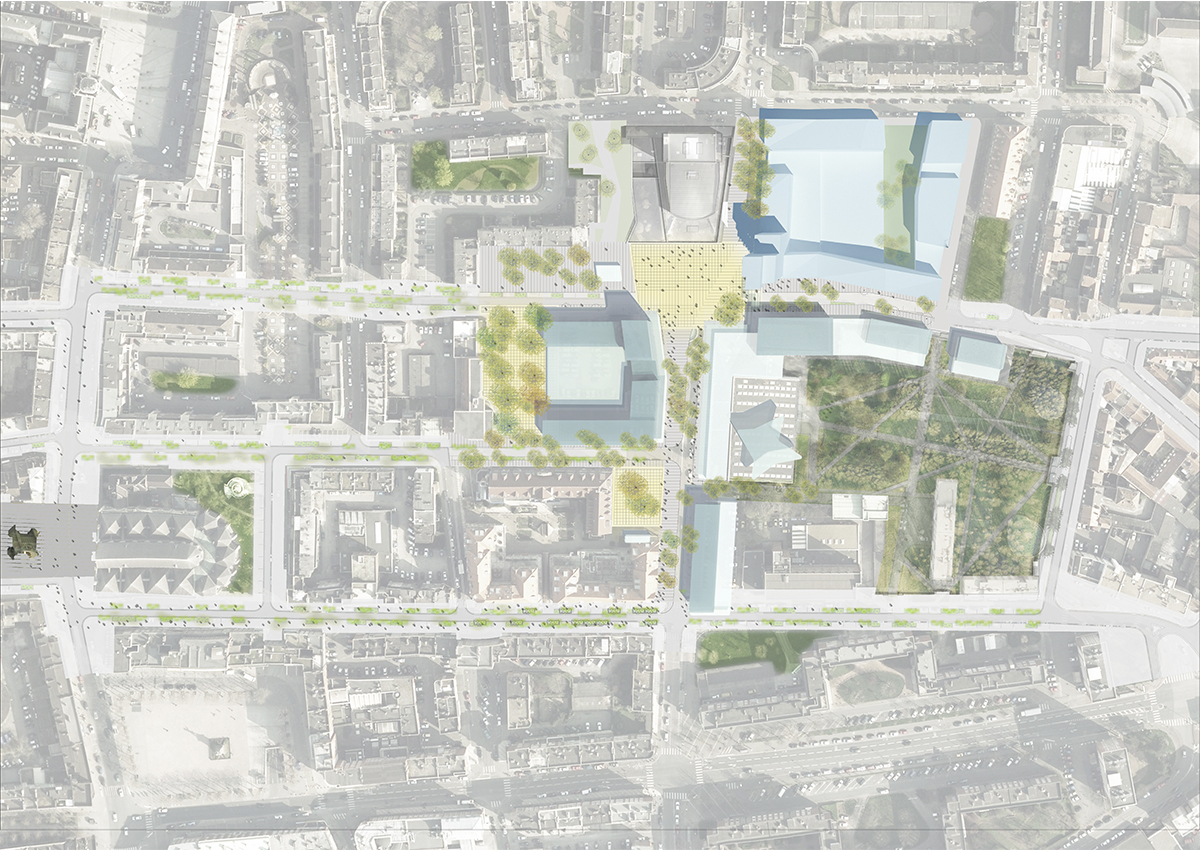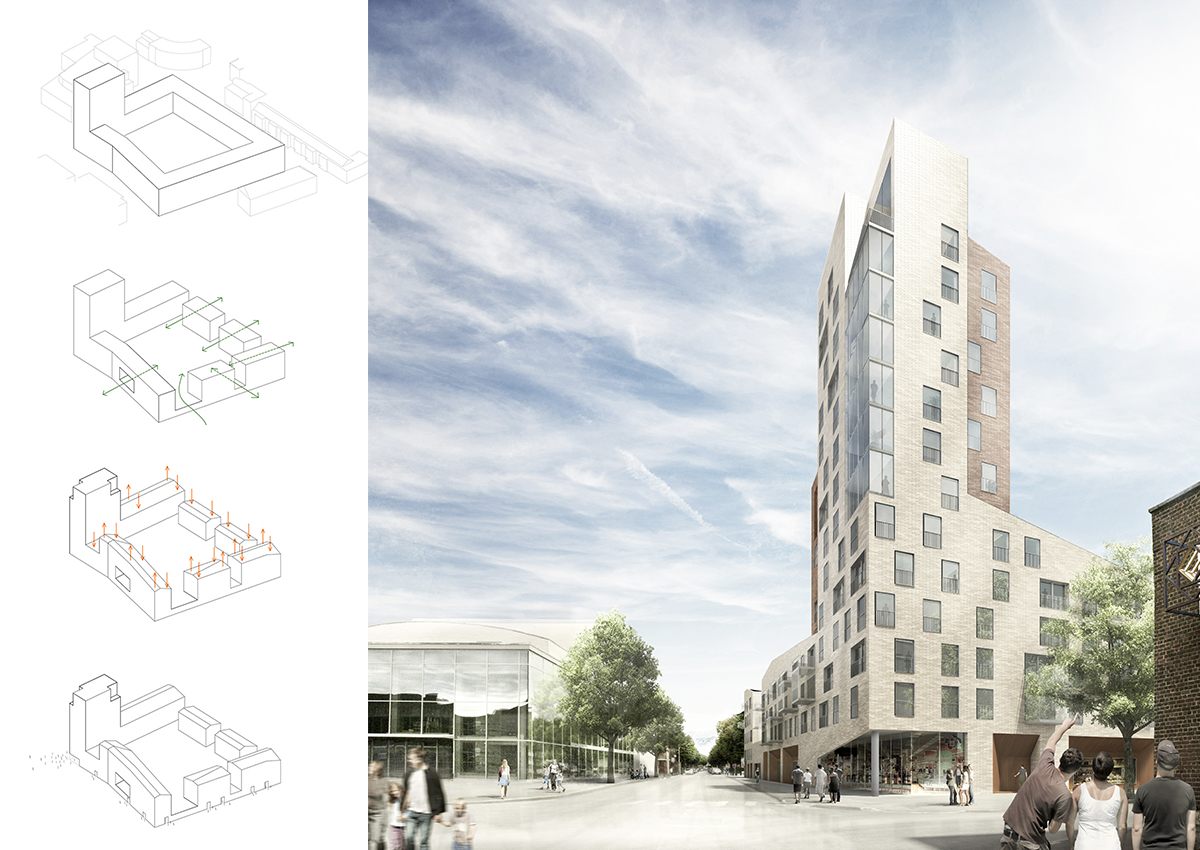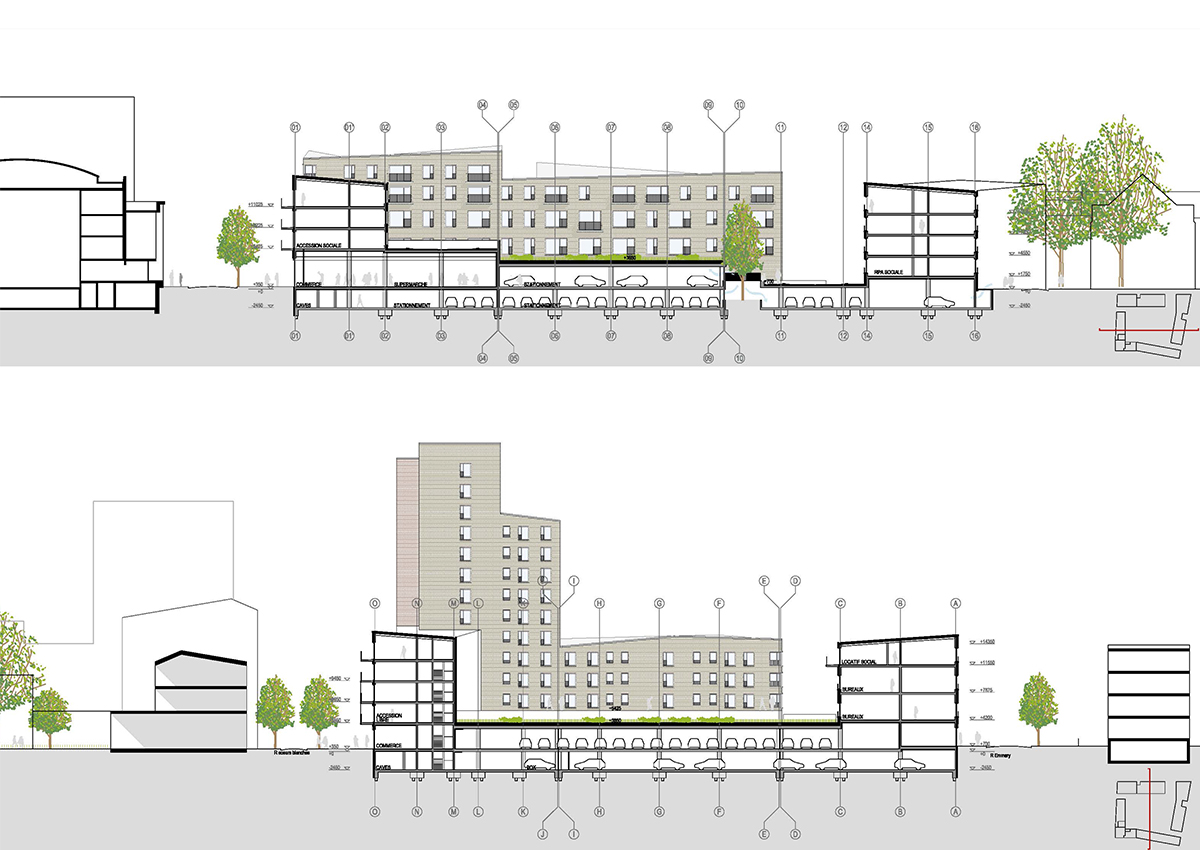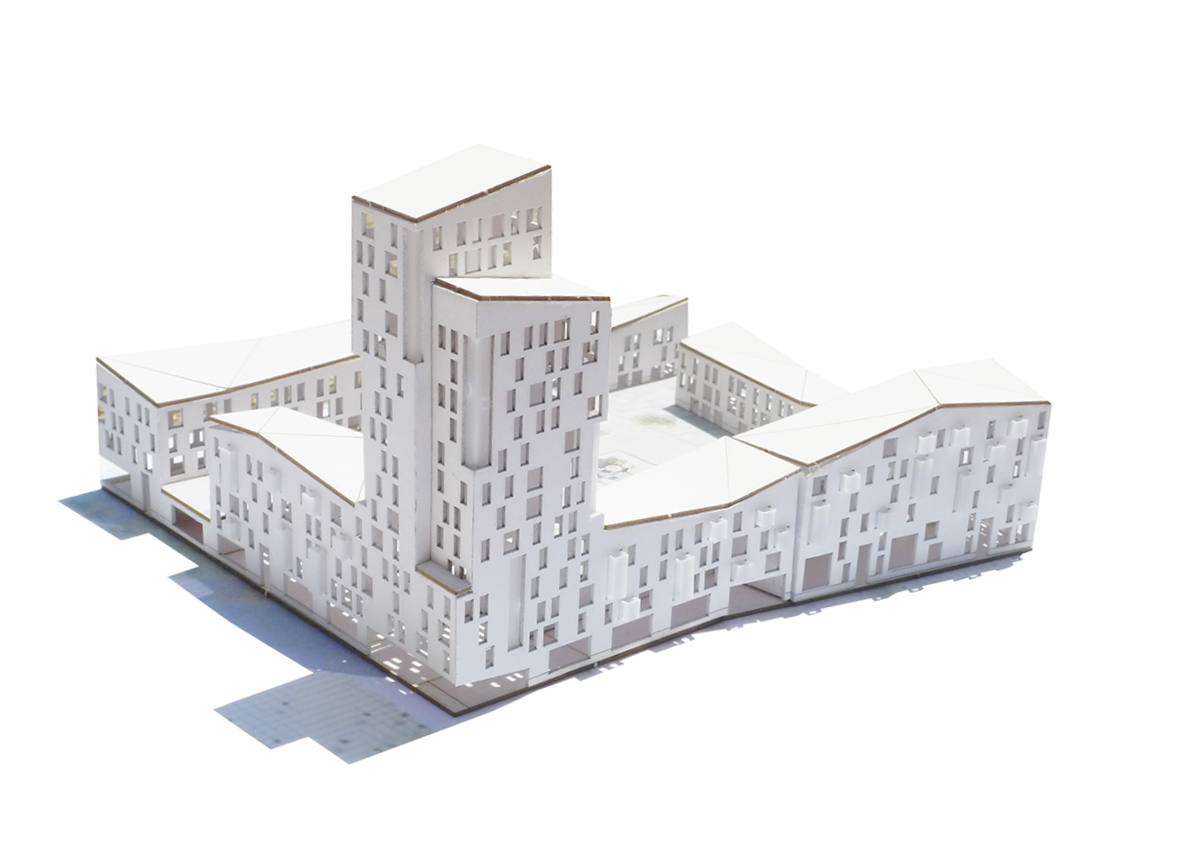Redevelopment in the centre of Dunkirk
Dunkirk is a city full of history, turned upside down many times, like a sheet of parchment erased and rewritten. It is a question of drawing inspiration from this history, while at the same time respecting the old buildings and the layout of the streets. In this context, urban development will reveal the buried history and nourish the new Dunkirk.
The block has a rather enclosed character, with a double orientation: at the front it faces an attractive public area and at the back a pleasant courtyard. This interior of this block has a “green” character which has a positive impact on the quality of housing.
The ground floor creates the physical transition between private and public. The windows of commercial premises are raised about 50 cm above the pavement, like a threshold. A distinction in terms of materials, heights, etc. is designed to differentiate the entrances to the dwellings from the openings of the commercial premises.
On the other hand, the profile of the city and its setting have always combined the horizontal and heavy masses of these hangars and ships with the verticality of the masts and the tradition of the Beffroi. Probably in a town with topography, if one plans to systematise the “high points” as elements of reference and orientation in the urban landscape, this is an opportunity to be explored: the 15-storey haut point reinforces the position on the new Place de Théâtre.





Dunkirk is a city full of history, turned upside down many times, like a sheet of parchment erased and rewritten. It is a question of drawing inspiration from this history, while at the same time respecting the old buildings and the layout of the streets. In this context, urban development will reveal the buried history and nourish the new Dunkirk.
The block has a rather enclosed character, with a double orientation: at the front it faces an attractive public area and at the back a pleasant courtyard. This interior of this block has a “green” character which has a positive impact on the quality of housing.
The ground floor creates the physical transition between private and public. The windows of commercial premises are raised about 50 cm above the pavement, like a threshold. A distinction in terms of materials, heights, etc. is designed to differentiate the entrances to the dwellings from the openings of the commercial premises.
On the other hand, the profile of the city and its setting have always combined the horizontal and heavy masses of these hangars and ships with the verticality of the masts and the tradition of the Beffroi. Probably in a town with topography, if one plans to systematise the “high points” as elements of reference and orientation in the urban landscape, this is an opportunity to be explored: the 15-storey haut point reinforces the position on the new Place de Théâtre.